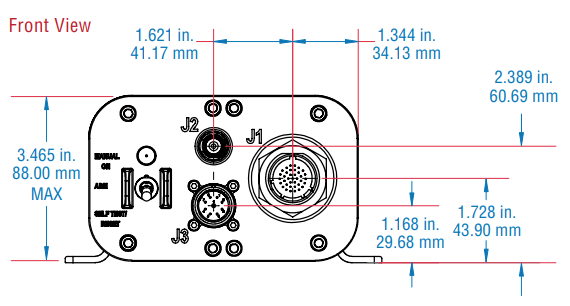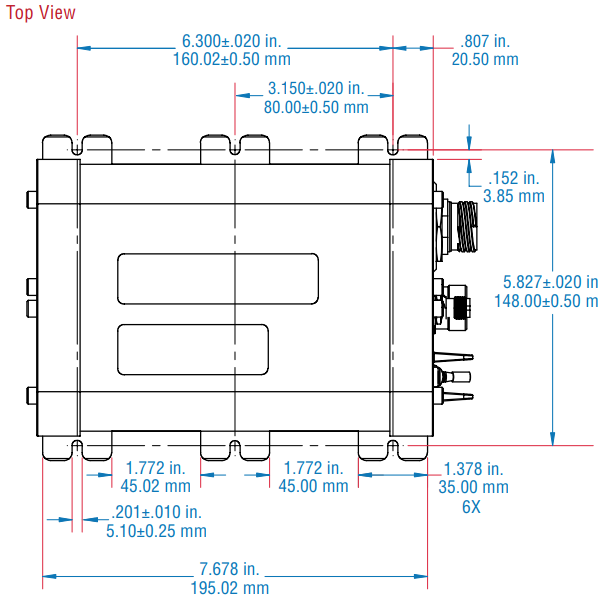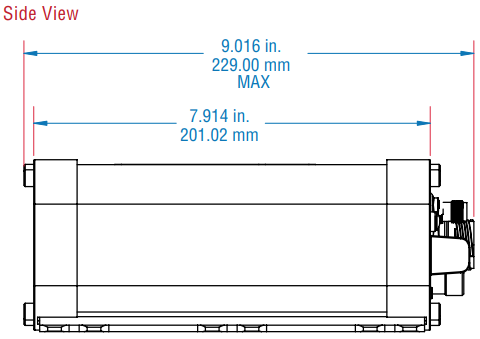
AeroELT™ DK-406-DT
Meets the Global Aeronautics Distress Safety System (GADSS) Requirements
Dukane Seacom’s new DK-406-DT is the first of its kind Second Generation Beacon (SGB) ELT-DT designed for use with the new worldwide Search and Rescue satellite network. TSO-authorized to TSO-C126c, the DK-406-DT is a crash-survivable distress tracking ELT that was designed for in-flight distress tracking and automatic in-flight triggering. Meeting current and future ELT requirements, the DK-406-DT includes improvements standard in the Dukane Seacom’s AeroELT
product line including:
Safety – The DK-406-DT is capable of safely containing a thermal runaway event of the internal lithium battery with no venting, in compliance with DO-227A.
Reliability – The DK-406-DT flame-resistant design includes an aluminum housing and fire-shielded transmit cable that improves performance in case of extreme heat or fire. The direct-mounted housing ensures crash safety and accurate triggering just as the robust system interconnects improve equipment durability.
Accuracy – Multi-axis MEMS device used to automatically detect impact improving trigger reliability over traditional “G-Switch” triggers. A self-contained GNSS receiver provides enhanced search and rescue capability to quickly locate any aircraft in distress worldwide.
Key Features
- TSO-C126c and TSO-C142b authorized
- Meets GADSS requirements for automatic in-flight triggering
- Second-generation beacon transmission compliant with COSPAS-SARSAT requirement T.018
- Significantly improved Search and Rescue response time
- Meets DO-227A requirements for thermal runaway containment with no venting
- Robust aluminum housing with military-grade connectors
- Ultra-reliable MEMS crash sensor
- Meets Class 1 ELT requirements
- Self-contained GNSS receiver
- Installation flexibility with configurable trigger axis
- 121.5 MHz homing transmission
- Fire-shielded transmit cable
Contact Dukane-Seacom for additional information.
DK-406-DT Specifications
| Operating Frequencies and Power | 406.05 MHz distress signal at 37dBm ±2dBm 121.5MHz homing signal at 18 to 21dBm Transmitter output terminated into a 50Ω load System (transmitter+cable+antenna) EIRP compliant with COSPAS-SARSAT requirements in T.018 |
| Operating Life | 5-year battery life Indication provided when a battery change is required Distress signal transmission for 24 hours after activation Homing signal transmission for 48 hours after crash activation |
| Connectors | TNC connector for antenna connection 37-pin 38999 style interface connector for remote control, ATU interface, and maintenance functions 9-pin Aircraft Configuration Module (ACM) connector |
| Temperature | Meets requirements for a class 1 ELT Operational from -40 ºC to +55 ºC Storage from -55 ºC to +85 ºC |
| Autonomous Trigger Unit (ATU) Activation | GADSS-compliant ATU and ATU Enable inputs, allowing inflight triggering from an ATU computer ATU trigger sources via configurable A429 interfaces and discrete inputs |
| Signal Type | Second Generation Beacon (SGB) transmission compliant with COSPAS-SARSAT requirements in T.018 |
| GNSS Location | Self-contained GNSS receiver, supporting L1 GPS and E1B/C Galileo (Return Link Service supported) Global position encoded into 406 MHz transmission |
| Remote Control | LED status and transmit indication Manual Activation / Self-Test / Reset switch |
| Weight | 5.3lbs (2.4kg) |
| Antenna | Blade-style antenna available Antennas combine transmit and GNSS onto a single connector, requiring a single RF cable |
| Self-Test Activation | 406 MHz and 121.5MHz Transmit Power and Frequency VSWR / Transmit Port Connection Low Battery Indication GNSS Status A429 Interface Status MEMS G-Switch Verification ACM Status |



